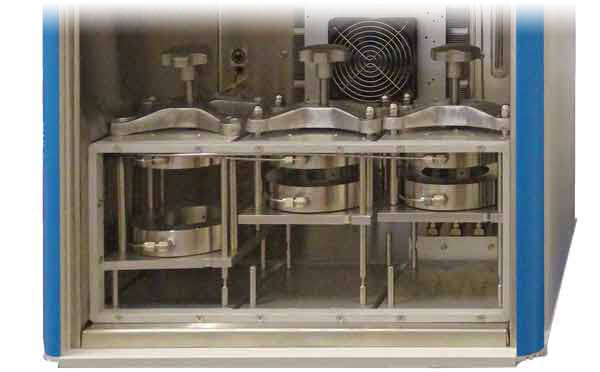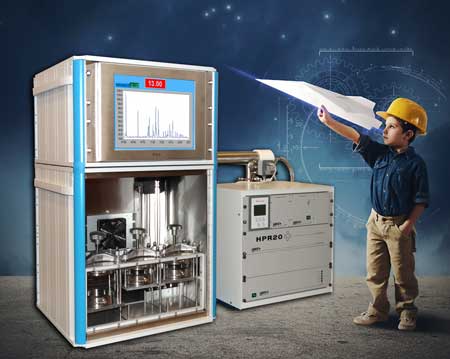

 Our Triple Chamber permeability measurement system builds on some forty years of continual development. It is highly sensitive, reliable and accurate. Its robust build and advanced software offer a high level of automation and ease without the loss of accuracy and repeatability.
Our Triple Chamber permeability measurement system builds on some forty years of continual development. It is highly sensitive, reliable and accurate. Its robust build and advanced software offer a high level of automation and ease without the loss of accuracy and repeatability.
It features three separate chambers enabling three separate measurements to be taken in parallel. The equipment can optionally measure vapour permeability for virtually every commonly available gas. Each new system is individually designed and built to meet a client's specific requirements, specification and application.
A large number sensor types and system configurations are available across an exceptionally extensive range of environments, controls and conditions. Its versatility is evident in the number of applications with which it is routinely tasked and the range of industries in which it is used.
Instrument Overview
The system can be built around any of a several physical techniques, the choice being based on the specific application, the required sensitivity and the needed/ accuracy. Results are displayed on the instrument screen or may be networked for remote data collection, processing and control.
Diffusion Chamber
Standard chambers can accommodate samples up to 38 mm thick, other chambers can be made available against specific requirements.
 Triple Chamber Configuration
Triple Chamber Configuration
In a typical configuration, three chambers are fitted into the controlled environment cabinet which features a simple clamping system. A carrier gas successively sources and delivers the diffused vapour under test to a sensor. In this way the throughput is tripled compared to a single chamber instrument, for only a relatively small increase in cost. One or more additional temperature controlled cabinets may be added, each with a maximum of 3 diffusion chambers.
Gas flow control is largely automated and the sensor is protected from any potentially high levels of a vapour by an automatic flow bypass circuit. This results in a significant extension in the life of the some sensors.
The instrument is controlled by a powerful built-in computer which operates on dedicated software running under the Windows to ensure compatibility with most existing systems. The instrument may be configured for networking to a laboratory management system or other system.
Operator interactions are via a large, clear and intuitive touchscreen, allowing both control and data display and output.
Sensors
Sensor types - click for more information on any sensor type
Universal sensors: mass spectrometer, gas chromatography, pressure measurements and semiconductor
Water vapour sensors: electrolytic, infrared, capacitive, impedance
Helium sensors: thermal conductivity
Hydrogen sensors: thermal conductivity, flame Ionization, catalytic combustion
Hydrocarbon sensors: flame Ionization, catalytic combustion, infrared, photoionization
Solvent sensors: flame Ionization, catalytic combustion, infrared, photoionization
Oxygen sensors: ZrO2, paramagnetic, electrochemical, coulometric
Carbon dioxide: thermal conductivity, infrared